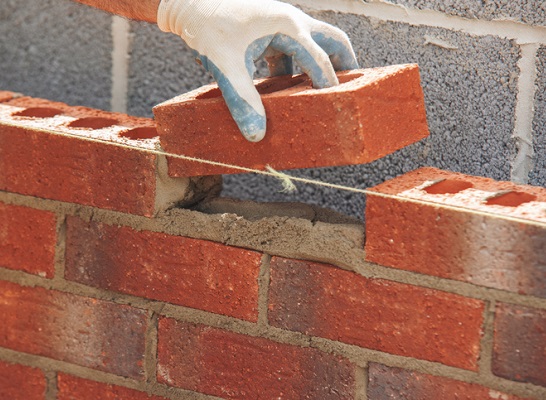A Guide to Bricklaying Apprenticeships
Reading time: 4 minutes
As well as learning how to construct and repair walls, property foundations, partitions and many other structures, becoming a bricklayer also opens the door for so many future work roles. Career routes from bricklaying can include becoming a building inspector, site supervisor or construction project manager.
How do bricklaying apprenticeships work?
During your time working towards a bricklaying apprenticeship qualification, you could have the opportunity to work on new build house constructions, large commercial developments and property extensions or restorations. Tasks could include laying bricks, blocks and other building components in mortar.
On-the-job experience of the day-to-day activities is only a part of your time studying for an apprenticeship in bricklaying though.
Apprentices must have a minimum of 20 per cent of their normal working hours dedicated to off-the-job training, whether this is weekly, monthly or a separate period to that used for on-the-job work. This can happen within a workplace, online, by attending a college or at a facility set up by a training provider.
Different levels of bricklaying apprenticeships explained
You have a couple of options when it comes to becoming a bricklaying apprentice, depending on your experience level and the skills you want to develop. Here’s each level currently available explained:
-
Bricklaying Level 2 Intermediate Apprenticeship – A hands-on apprenticeship which teaches people about the basics needed to achieve a successful brickwork career.
As well as learning about how building components should be set out and laid when either constructing or repairing structures, you may also work on new build property constructions, restorations, extensions and more.
-
Craft Bricklayer Level 3 Advanced Apprenticeship – Progressing on from the Bricklaying Level 2 Intermediate Apprenticeship, this course details how to set out and lay bricks, blocks and other materials into complex and specialised structures needed to become a Craft Bricklayer.
Bear in mind though that the home nation where you study for your bricklaying apprenticeship could affect the structure and other aspects of your path to becoming a qualified bricklayer.
Specific advice about becoming an apprentice should be sought out on the official apprenticeship hubs for Wales, Scotland, Northern Ireland and England.
How long is a bricklaying apprenticeship?
While various bricklaying apprenticeships will take you around two years to complete, the duration can alter depending on the level of apprenticeship you are studying.
Employers and training providers can change how long an apprenticeship which they offer will take too, so it is best to enquire with both parties about expected duration once you have shown interest in a course.
Bricklaying apprenticeship wages
Both your age and the year that you are currently on an apprenticeship course will affect your wages.
GOV.UK details that the National Minimum Wage rate, which is currently £7.55, must be provided to anyone who is aged 19 years or over and in the first year of their apprenticeship. You will be on this rate if you are between 16 and 18 years old too.
If you are 19 years old or over and have already completed the first year of your apprenticeship though, you must be paid the National Minimum Wage or National Living Wage rate for your current age. The current rates are set out here.
Apprentices are paid for all of these aspects of their bricklaying apprenticeship:
-
Standard working hours.
-
Any training which makes up an apprenticeship course.
-
Studying towards English and Mathematics qualifications, if an apprenticeship course includes this aspect of someone’s education.
We wish you the best on your journey to becoming a skilled bricklayer. Still not sure which trade you want to get into though? Let us help, by reading through our career guides covering how to become a roofer, plumber, joiner, carpenter or builder.
Disclaimer: Information displayed in this article is correct at the time of publication, but note that legislation changes periodically. The information contained on this page is intended as an overall introduction and is not intended as advice from a professional. Travis Perkins aims to avoid, but accepts no liability, in the case that any information stated is out of date.




